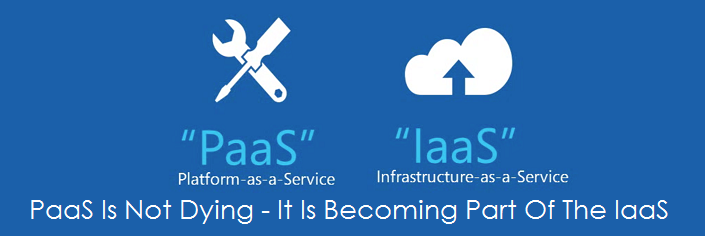PaaS Is Not Dying – It Is Becoming Part Of The IaaS

As Brandon Butler, Network World, informed, PaaS seems to be turning into IaaS. Not sure that is news to anyone, but it’s interesting that people are starting to understand this situation.
At the heart of the matter is the fact that PaaS is now in the area’s most defined enterprise cloud hosting solution. Approaches, resources and definitions vary widely, with many providers of PaaS offering a specific focus, which may include support for specific programming languages.
In addition, many providers are working with IaaS PaaS, or IaaS providers being bought by, the logical reason that IaaS need a place to build applications and PaaS providers need infrastructure services to support the resulting applications.
This raises the question: what is the role of PaaS in the enterprise?
PaaS providers have been sitting in the shadows a bit. In the accounts of Gartner, the market for cloud computing is of 131 billion dollars. PaaS is about 1%, whereas SaaS is 14.7% of the market and IaaS with 5.5%. Based on cloud services business processes account for most of 28%. ”
However, a dark side of the PaaS model emerged last year: some people consider it too complicated and too limiting for most development efforts. Furthermore, most IaaS providers also offer development tools. What is the best way and / or platform for application development for your business? PaaS has some good points and some bad.
A downside? Most PaaS offerings placed in a developer sandbox, providing only the features and functions of the PaaS provider to create and deploy applications. Although this allows a easy and controlled development process, many developers need to access other resources and tools to support specific features, such as remote and native APIs and middleware services and database.
A good side? PaaS offers a standard for application development, testing and deployment unified platform, making it easier and faster development, at least in theory. But until now, most companies have not yet purchased this concept, much less tried to accomplish it.
The fact is that PaaS is not dying, but it’s changing. PaaS is being, in fact, combined with IaaS. Makes sense PaaS capabilities exist as part of an IaaS provider because PaaS platform needs access to storage services, database services, computing services, and so on. This is a good thing.
PaaS is adjusting to market needs.
Resources:
- How Cloud Computing Is Changing The Labor Market - March 25, 2015
- Adopting Infrastructure as a Service Can be a Good Deal - March 17, 2015
- Will Virtualize? Take These Six Points Into Consideration - March 12, 2015
